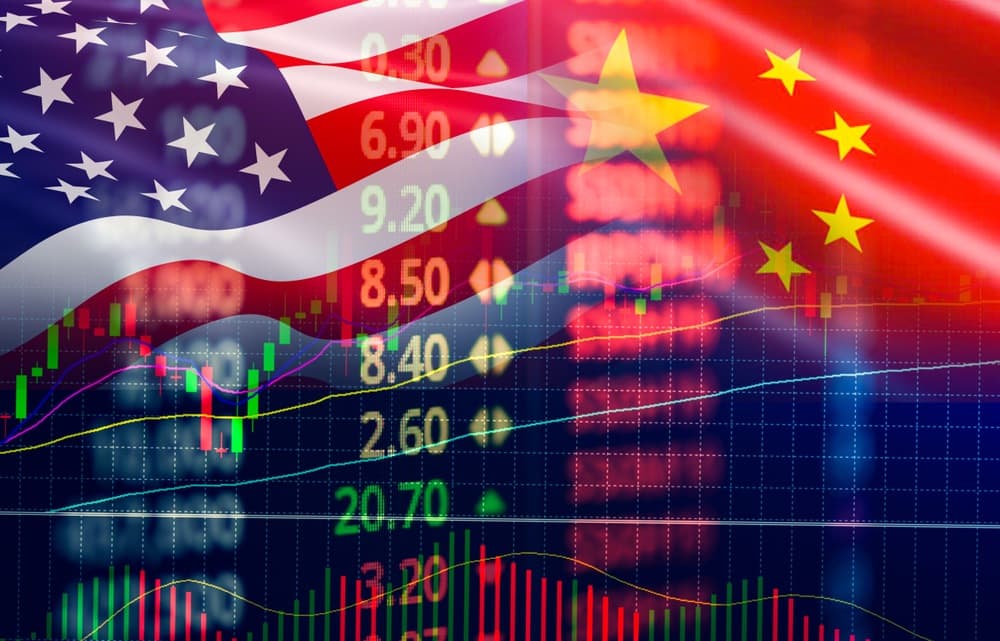
“On Wall Street, there is no “Wall Street”; there are individuals.”
—Jamie Dimon
January 23, 2025— Jamie Dimon isn’t just the CEO of JPMorgan Chase. In a way, he’s the continuation of the legacy of the bank’s founder, John Pierpont Morgan, another throwback to the Gilded Age since we’re on the topic.
J.P. Morgan bailed out the United States government during the Panic of 1907, just as he had done in 1893.
Morgan gets a heap of historical kudos for playing the role of government banker who confidently led America’s economic policy through the turbulent McKinley era and the violent surge of centralized government during the Progressive Era.
Sick and tired of fiscal malfeasance in Washington’s back rooms, Morgan was a co-conspirator in creating the Federal Reserve, memorialized in Griffin’s cult classic The Creature from Jekyll Island.
Some patina of the legendary Morgan Bank remains today.
Jamie Dimon has been a fair steward of the bank’s brand. The young Dimon came up through the ranks during the meltdown of LTCM and other lesser crises. Then played the role of “steady hand” as its CEO during the 2008 financial saga.
“Get over it,” Dimon told the media yesterday about those who oppose Trump’s tariff plans. Dimon was recently offered up as a possible presidential candidate, particularly by Democrats looking for a pro-business alternative to oppose Trump.
No dice.
Now, Dimon isn’t throwing in behind Trump entirely. But he is adopting a “if you can’t beat join ‘em” approach for the bank’s interest. Not to mention, he’s been on a media binge lately, “trying to humanize himself,” one friend suggested this past weekend, lest a Luigi Mangione copycat be lurking about the JPMorgan Chase HQ in Lower Manhattan.
In all, you have to admit that Trump’s second coming and invocation of McKinley are entertaining — engaging even.
We were inspired to write again today after yesterday’s piece spawned several diverging threads, including a rather beautiful Beatnik-inspired stream-of-consciousness rant from Steven P., which I thoroughly enjoyed. (I read it to the end, chuckling the way I would watch late-night comedians who make their living with thrifty left-leaning zingers.)
Boning up on McKinley, and comparing those days to the Second Coming of Trump, feels a little like we’ve wandered into a Gilded Age theme park. And I’m enjoying the ride.
Seriously — you don’t even have to squint; it’s all there. The tariffs, the imperial ambitions, the populist saber-rattling about sound money, and even the bombastic media fueling the whole circus.
Look over here… to this day, you can see the pockmarks in the old JP Morgan bank building on the corner of Wall and Broad, where a horse-drawn carriage packed with 100 lbs of dynamite exploded, killing 38 people. James Pierpont was not at the bank himself that day.

From Gilded to Gaudy: 125 Years of Tariffs, Debt, and Delusions. (Source ChatGPT)
On the political front, it’s as if McKinley’s ghost is running the script, with Trump recast as the modern-day lead. But instead of top hats and gold watches, it’s red hats and Twitter, er X, tirades.
The bimetallist debate from McKinley’s day still eludes most investors and everyday folks engaged in the economy. But it was an important one that has left a residue, even in pop culture. Doctoral dissertations have been written examining The Wizard of Oz scene by scene, asserting its cartoon depiction of the debate between McKinley and Williams Jennings Bryant and the epic showdown between gold and silver.
Back then, the gold bugs and the free silver crowd fought like cats in a sack over what constituted “sound money.”
McKinley, ever the industrialist lapdog, stood firm for the gold standard, while William Jennings Bryan famously warned against crucifying mankind on a “cross of gold.”
It was a fight about who controlled the economy: the elites or the everyman.
Today, the argument has shapeshifted into debates over inflation, fiat money, and whether bitcoin is the messiah or just the next tulip mania.
Trump doesn’t even bother pretending to understand monetary policy. He’d rather blame Jerome Powell for not making money cheap enough to fuel his economic pageantry.
And then there’s the media circus.
McKinley had William Randolph Hearst and Joseph Pulitzer to churn out sensationalism, whipping the public into a froth over Cuba and the mysterious sinking of the USS Maine. “You furnish the pictures, I’ll furnish the war,” Hearst allegedly said. Did he deliver? Meh.
Fast-forward to today, and we have an entire ecosystem of partisan outrage machines doing much the same thing: cable news, social media influencers, and digital propagandists—all stoking conflict to keep the clicks coming.
Forget the Maine; now it’s “remember the laptop” or “stop the steal.” The platforms have changed, but the game is the same: bend reality to fit the narrative and sell it to a primed audience.
Even Trump’s foreign policy has shades of McKinley’s imperial swagger. The Spanish-American War gave McKinley a quick and tidy victory, not to mention new real estate like Puerto Rico and the Philippines. Trump may not have started a war, but his Greenland stunt was peak imperial hubris, a real estate mogul’s fever dream dressed up as geopolitics. Having been there myself, I get it.
His efforts to reassert U.S. dominance in the Gulf of Mexi… er, America… and Panama Canal echo McKinley’s vision of a world where America calls the shots. The difference? McKinley actually got the Philippines, for better or worse. Trump’s legacy will be more like a string of unsold condos — flashy, ambitious, but ultimately hollow.
The parallels don’t stop there. Just as McKinley rode high on industrial barons and expansionist pride, Trump’s playbook is about stoking nationalism to distract from economic reality. The national debt in 1898 was a modest 7% of GDP. Today, it is over 122% — and climbing. Both men sold gilded promises while hiding the structural rot beneath.
So here we are, trapped in a garish replay of the Gilded Age, with all its glitter… and its grime. McKinley had Hearst, McKinley had Cuba, and McKinley had gold. Trump? He’s got Fox News, Greenland, and the newly minted Trump coin.
The more things change, the more they stay absurd.
Regards,

Addison Wiggin,
Grey Swan
P.S. “Your exploration of the symbolism behind Trump’s ‘restoration’ of Mount McKinley,” writes Scott P. “is as insightful as it is sobering. The parallels you draw between McKinley’s Gilded Age policies and Trump’s attempts to mimic them in a vastly different economic landscape highlight a troubling throughline: the enduring dominance of wealth and power over the collective good.”
Hmn. We’re always suspicious when readers invoke the collective, er, anything. But I suppose it’s fair game. We’re a fraternity, after all. Scott continues:
The tragedy is that Trump, a purely transactional figure, is playing a game that serves himself first and those wealthy elites supporting him. Together, they are capitalizing on the devotion of Trump’s cultlike followers to consolidate power and wealth in unprecedented ways. Trump’s narrative of a new Golden Age is less about shared prosperity and more about securing his position at the top of an exclusive hierarchy.”
The question we face is not just about the new administration’s strategies or policies but about the kind of game we, as a society, choose to play. Do we continue to compete to take, benefiting the few at the expense of the many? Or do we shift toward a productive, collaborative making game—one that values contribution, mutual benefit, and long-term sustainability?
This rhetoric of redesignating Denali as Mount McKinley forces us to confront deeper questions about our values and choices as a nation. Do we perpetuate old narratives that serve the few, or do we create new ones that uplift us all?
P.P.S. On point, Dean M. adds:
One thing seems clear to me; the current irregular marriage of the super rich to the new leadership of the country suggests the possibility of both radical change and a rhyming with previous eras.
Some differences come to mind.
The gullibility and ignorance of the proletariat frankly shock me. The pedantic education of the 1950s, which told us what to learn, has been replaced wholesale by “it doesn’t matter what you think; all that matters is how you feel.” Objective facts have lost much of their value in our country’s tribalistic narrative.
Dean then goes on to remind us all that opinions are like a-holes. And you know what “they” say about those. Everyone’s got one. Dean admits to it himself.
P.P.P.S. “Addison,” writes William D. with some support and a little advice. “You and Bill Bonner have been right on since the beginning when you both started trying to educate all of us. You both have done a great job and a great service. I leave you with this philosophy:
In order to understand, you have to learn; in order to learn, you have to ask; if you’re talking, then you’re not listening.
“It would be wise for most to memorize this. It pertains to a lot of uneducated people. Wish you both well. Keep up the good work.”
Keep your productive ideas coming. Critiques, disagreements and scandalmonerging are also welcome. Send to addison@greyswanfraternity.com



